#prince gorm of denmark
Explore tagged Tumblr posts
Text
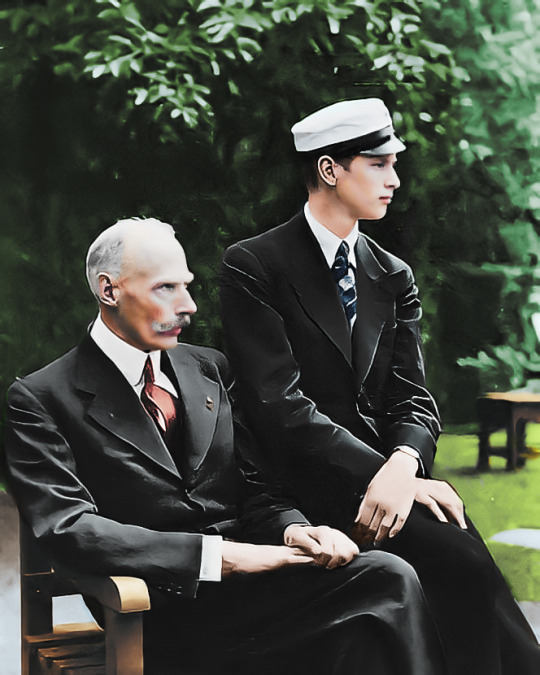
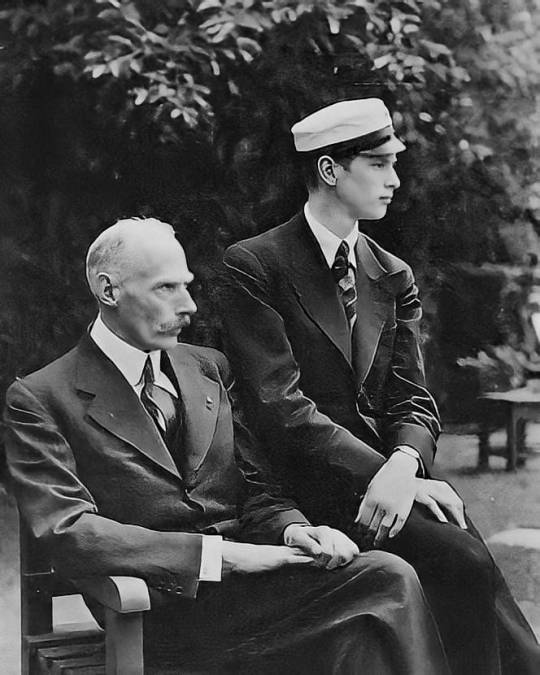
Prince Harald of Denmark with his son Prince Gorm of Denmark, 1939.
#royalty#royals#denmark#danish royalty#danish royals#danish royal family#det danske kongehus#prince#prince of denmark#prince harald#prince gorm#1930s#vintage#colorization#tumblr#history in color#history colored#history#royal history#danish history#colourisation#love
23 notes
·
View notes
Text
who: royal duchies of mecklenburg
Since 1930 various members of the Royal House of Mecklenburg have been awarded dukedoms similar to the current practice in Sweden.
The first two dukedoms were awarded to the children of King Heinrich Ludwig I on 1 January 1930 when the King changed the rules of succession to allow women to inherit. Since 1930, dukedoms have been awarded upon birth, with the exception of Heinrich Ludwig’s three eldest granddaughters who were born in London during WWII. The three princesses were retroactively granted their titles once word of their births had reached the King in Mecklenburg.
These titles are only nominal and non-hereditary, though they are transferrable to any spouse of the original holder of the title. The dukedoms are granted without rank but are placed above all other titles (except for monarchical titles and the crown princely title of the heir/ess apparent). Unlike Sweden, the monarch continues to use their dukedom title after ascending the throne.
Dukedoms’ names are taken from major cities and towns in Mecklenburg, along with significant landmarks.
Below is a list of dukedoms in the order they were granted:
Paul Friedrich II, Duke of Rostock, 1930-1982
Marie Elisabeth, Duchess of Parchim, 1930-present
Heinrike Franziska, Duchess of Ratzeburg, 1940-present
Elisabeth Mathilde, Duchess of Güstrow, 1942-present
Marie Anastasia, Duchess of Grevesmühlen, 1944-present
Cecilie Auguste, Duchess of Ludwigslust, 1947-present
Wilhelm Franz I, Duke of Schwerin, 1949-1992
Alexandrine Luise, Duchess of Waren, 1951-present
Albrecht Gustav, Duke of Bad Doberan, 1953-present
Ingrid Sophie, Duchess of Teterow, 1955-2012
Karolina Augusta I, Duchess of Elde, 1988-present
Karolina Augusta I, Duchess of Rostock, 1989-present
Klaus Wilhelm, Duke of Havel, 1992-present
The spouses of the above also held or hold the titles by virtue of their marriage:
Thyra of Mecklenburg-Schwerin, Duchess of Rostock, 1939-1981
Gorm of Denmark, Duke of Parchim, 1949-1991
Rupprecht of Hohenlohe-Langenburg, Duke of Güstrow, 1970-1978
Heinrich of Hesse-Kassel, Duke of Grevesmühlen, 1972-1999
Michael, Hereditary Prince of Schwarzburg, Duke of Ludwigslust, 1975-present
Alexander of Schleswig-Holstein, Duke of Waren, 1980-present
Veronica Doncaster, Duchess of Bad Doberan, 1982-present
Eleonora of Leiningen, Duchess of Schwerin, 1985-present
While there are no rules regarding who can and cannot be awarded dukedoms, it is the intention for the titles to be limited to the children of the monarch and the children of the heir or heiress apparent.
0 notes
Text
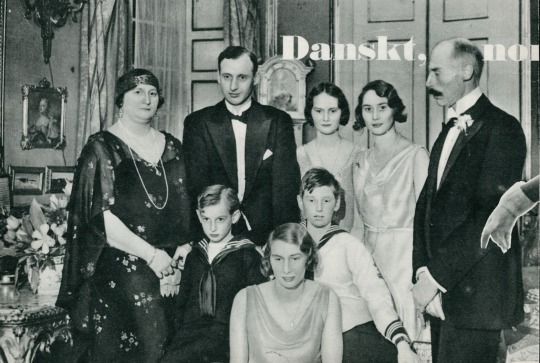
Royal Engagement in 1932.
Prince Knud of Denmark and his fiancée Princess Caroline-Mathilde of Denmark with her parents, Prince and Princess Harald, and siblings, Princess Feodora, Princess Alexandrine-Louise, Prince Gorm and Prince Oluf.
Knud and Caroline-Mathilde were first cousins. Their fathers were brothers.
#prince harald of denmark#princess harald of denmark#hereditary prince knud of denmark#prince knud of denmark#princess feodora of denmark#princess caroline-mathilde of denmark#princess alexandrine-louise of denmark#prince gorm of denmark#prince oluf of denmark#danish royal#danish royalty#danish royal family#1932#1930s
13 notes
·
View notes
Text
WILD ARMS 2 - Millennium Puzzle
No, not the one from Yu-gi-oh.
This is a great little set piece for the game overall. It introduces both a device and a plot point very early, both of which get brought back up much later in the game. The story itself is a little odd, we aren’t told here what Lilka’s actually doing or where she is, other than she is trying to operate this magical contraption/facility with her sister’s instruction. The dungeon is aesthetically fun and memorable, made up of ornately patterned blocks over a colorful nebulous kind of magical aether. The dungeon and name would actually go on to inspire the much more elaborate Millennium Puzzle side quest in Wild Arms 3, with matching aesthetic.
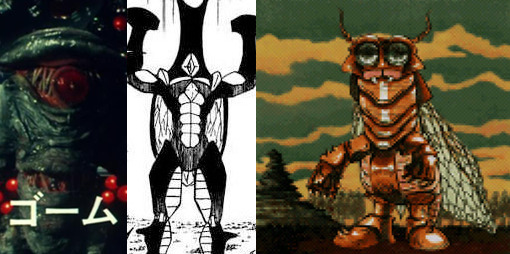
We start with a real weird one: The Gohm are these humanoid cockroach looking enemies that make up most of the random encounters. The frustrating part is that there’s really nothing to go off of as far as a source or inspiration. The only related content I could find is a monster-of-the-week from the super sentai series, Dengeki Sentai Changeman, and a character from the manga Konjiki no Gasshu!! (aka Zatch Bell!):
The Go-mu monster in Changeman doesn’t really bare any resemblance but the kana, ゴーム , are exactly the same, and it does have an electric shock attack. Gorm/Goomu, from Zatch Bell, is also a humanoid bug but doesn’t seem to share any more specific features like the electric attack or direct ties to magic that might place it in this magic puzzle environment.
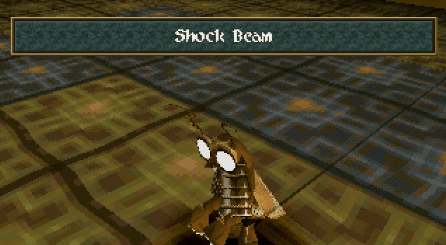
Beyond that, the katakana ゴーム romanizes a number of ways: Gomu, Gohm, Gorm, Gome, Gomm, Gomme, etc... none of which really lead anywhere in the search. Gorm most notably is the name of Gorm the Old, and Gorm Prince of Denmark, both of which are written in kana as ゴーム, yet neither of whom appear to have anything to do with bugs, magic or electricity/lightning.
So... yeah... Seriously, I have zero idea what the hell this thing is...

This one’s more concrete and despite the innocuous name, actually a really clever way to come up with a fairly original monster. (The Blue Book also appeared in the original Wild Arms, also in the crest sorceress character’s prologue dungeon, the Sealed Library.) The Blue Book enemy is, as its name suggests, a kind of compilation of magic information, in this case having access to most of the basic elemental attack spells.
And a clever little detail is that because the Blue Book is weak to fire (duh, it’s a book) the Flame spell is the one elemental attack it can’t use.

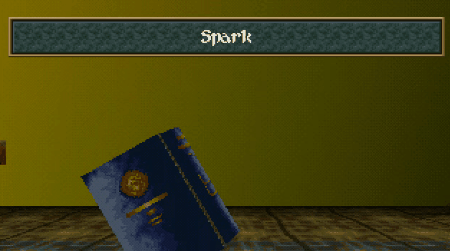


Over the course of the franchise there have been other book enemies as well, including the Necromicon[sic], Targum, and Adult Mag/Dirty Mag. The Necronomicon is of course the famous pop culture icon of Lovecraftian lore, a detailed grimoire of old gods and summoning rituals written by one Abdul Alhazred. As a fun related note, the first Wild Arms game features a major antagonist named Alhazad which is actually an error in reversing the transliteration from Alhazred to アルハザード(a-ru-ha-zaa-do).
Another fun obscure factoid, is that the Targum enemy is named after the early Aramaic translations of Jewish scripture from Hebrew. Although the first Wild Arms game transliterated タルギュム(ta-ru-gyu-mu) as Talgium.

The Bogey is based on such a broad and archaic term, there wasn’t really a good visual to use for this: There both wasn’t any good quintessential bogey to really represent the concept, and of the various differing ones out there none were really any kind of inspiration for Wild Arms 2′s interpretation. The bogey is of course the origin of the term Bogeyman (aka Boogeyman/Boogieman/Bogieman, etc...) and the two ideas are functionally the same. Apart from being vaguely ghostly and/or jellyfish-like, I don’t really get “evil spirit” vibes from this design, though...

It also just has a normal attack and Drift, which wastes a turn, so those don’t lend any flavor to it either. The one thing of any real relevance is that the Millennium Puzzle is later revealed to be a gate to the afterlife, from which Lilka tries and fails to pull her late sister back through, and later, fellow protagonist, Ashley Winchester; so, spirits and/or ghosts aren’t entirely out of place here, but once we take that into consideration the Blue Books start to make less sense. And again, Gohm remains an enigma in and of itself.
So all in all the dungeon’s inhabitants aren’t super unified, apart from the very loose thread between the Bogey being a ghost, and the Blue Book being a grimoire making for a vague occult/supernatural motif. Really I don’t know what to make of most of this... It’s not quite “nonsense” as far as dungeon ecology goes, but it’s not as neatly coherent as the Withering Ruins or even Green Hell from the other two prologues.

And then the boss of Lilka’s prologue chapter, which I wasn’t even going to mention at first, doesn’t actually appear in the dungeon itself. The dungeon is part of a flashback to events that led to Lilka’s arrival in a small town where the boss monster attacks. And honestly, even if I were to look for some thematic ties between everything here, I don’t think I could squeeze anything meaningful out of it.
Like... the boss monster is just named Olivier?? That isn’t just not-a-monster, that’s not even a thing. It’s just a person’s name... I don’t think there’s anything it could’ve been mis-transliterated from either, then kana is pretty straight forward: オリヴィエル(o-ri-vi-e-ru). Oliviel? Oriviel? Orivier? don’t really make any more or less sense than Olivier does. (both Gorm and Olivier are Dutch names though...)
The one thing I’ve found is that the kana frequently come up in some fairly low budget Japanese games (and all more recent than Wild Arms 2) as the name of angelic figures, all women, and with epithets like “SwordSong Master,” “Fallen Angel,” “Dark Angel,” etc... which would suggest that the name ends in -iel and draws from some biblical source. But that just points me to the archangel Orifiel/Oriphiel, which is remarkably close phonetically, but that ヴィ can really ONLY be read as a “vi.” And even then, it’s a wild tangent, because there is absolutely nothing about the monster Olivier that suggests “angel,” fallen or otherwise, and the angel in question doesn’t associate with anything relating to the monster anyway...
10 notes
·
View notes
Photo
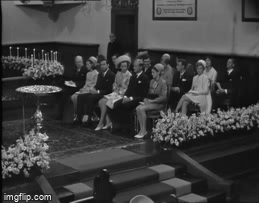

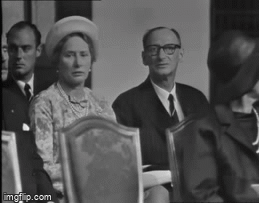
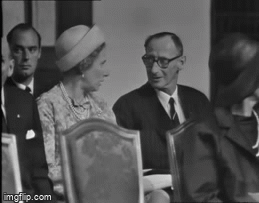


Count André de Laborde de Monpezat & Countess Renée-Yvonne de Laborde de Monpezat, Hereditary Prince Knud & Hereditary Princess Caroline-Mathilde of Denmark, Princess Margrethe of Bourbon-Parma, Prince Viggo, Count of Rosenborg and Prince Gorm of Denmark at Crown Prince Frederik’s baptism on June 24, 1968
Baptism 3/??
#count andré de laborde de monpezat#countess renée-yvonne de laborde de monpezat#hereditary prince knud of denmark#hereditary princess caroline-mathilde of denmark#princess margrethe of bourbon-parma#prince viggo count of rosenborg#prince gorm of denmark#june 1968#count of monpezat#danish royal family
0 notes
Text
Asteroids in astrology that is named after Kings and Queens, plus the meaning of the asteroids in astrology ✨👑
Credits to : wikipedia from google and other astrology websites because i didnt wrote this all
If you want to know what the asteroid means in astrology go to google and search the story of it. (Example : asteroid "hatshepsut (2436)" was named after the female pharoah hatshepsut from egypt, and then i checked her story and it was said that she was the greatest female pharoah of all time but receive jealousy from men because of her sucess , so then i interpret that into what the asteroid means in astrology, as simple as that)
(i will update and keep updating this post of I found some of the meanings of what the asteroid means is astrology)

12 Victoria (officially named after the Roman goddess of victory, but also honours Queen Victoria) - this asteroid also means victory in astrology so in astrology this asteroid symbolize "victory"
45 Eugenia (Empress Eugénie), with its moon Petit-Prince in part for her son Napoléon Eugène, Prince Imperial - displacement to the source of nourish, like migratory birds in nature
115 Thyra (Thyra, consort of King Gorm the Old of Denmark)
216 Kleopatra (Cleopatra VII of Egypt) - a femme fatale, amazing sex appeal, messy love life, having power over your lovers
220 Stephania (Princess Stéphanie of Belgium) - being in a unhealthy relationship and then break up and suddenly be in a healthy relationship with someone else
295 Theresia (Maria Theresa Walburga Amalia Christina Empress consort of the Holy Roman Empire and Queen consort of Germany)
326 Tamara (Queen Tamar of Georgia)
344 Desiderata (Queen Desideria of Sweden and Norway)
359 Georgia (King George II of Great Britain) -
392 Wilhelmina (Queen Wilhelmina of the Netherlands)
525 Adelaide (Queen Adelaide, consort of William IV of the United Kingdom)
545 Messalina (Messalina, Roman empress) - uncontrollable sexual desire or having nymphomaniac.
546 Herodias (Herodias, wife of Herod II and mother of Salome)
562 Salome (Salome, daughter of Herod II and Herodias) -
598 Octavia (Claudia Octavia, Roman empress)
650 Amalasuntha (Amalasuntha, queen of the Ostrogoths)
653 Berenike (Berenice II, Egyptian queen)
689 Zita (Empress Zita of Bourbon-Parma)
816 Juliana (Queen Juliana of the Netherlands)
823 Sisigambis (Sisygambis, mother of Darius III of Persia)
831 Stateira (Stateira, wife of Artaxerxes II of Persia)
832 Karin (Karin Månsdotter, wife of Eric XIV of Sweden)
888 Parysatis (Parysatis, wife of Darius II of Persia)
911 Agamemnon (Agamemnon)
1068 Nofretete (Nefertiti)
1128 Astrid (Astrid of Sweden)
2436 Hatshepsut (Pharaoh Hatshepsut)
3362 Khufu (Pharaoh Khufu)
4414 Sesostris (Greek version of Senusret, name of four pharaohs)
4415 Echnaton (Pharaoh Akhenaten; German spelling of his name)
4416 Ramses (Pharaoh Ramses II)
4568 Menkaure (Pharaoh Menkaure)
4721 Atahualpa (Atahuallpa)
4846 Tuthmosis (Thutmose, name of four pharaohs)
4847 Amenhotep (Pharaoh Amenhotep IV)
4848 Tutenchamun (Pharaoh Tutankhamun)
4906 Seneferu (Pharaoh Sneferu)
5009 Sethos (Greek version of Seti, name of two pharaohs)
5010 Amenemhet (Amenemhet, name of four pharaohs)
5242 Kenreimonin (Empress Dowager Kenrei)
7117 Claudius (Emperor Claudius)
7207 Hammurabi (Hammurabi)
7208 Ashurbanipal (Ashurbanipal)
7209 Cyrus (Cyrus II of Persia)
7210 Darius (Darius I of Persia)
7211 Xerxes (Xerxes I of Persia)
7212 Artaxerxes (Artaxerxes II of Persia)
8740 Václav (Václav I, Duke of Bohemia)
10293 Pribina (Pribina, ruler of Nitrian Principality)
11014 Svätopluk (Svätopluk, ruler of Great Moravia)
16951 Carolus Quartus (Charles IV, Holy Roman Emperor and King of Bohemia)
18349 Dafydd (Dafydd ap Llywelyn, prince of Wales)
20969 Samo (Samo, ruler of Samo's Empire)
25340 Segoves (Segoves, Celtic duke)
44613 Rudolf (Rudolph II, Holy Roman Emperor, king of Bohemia and Hungary)
48844 Belloves (Belloves, Celtic duke)
53285 Mojmír (Mojmír I, ruler of Great Moravia)
151834 Mongkut (King Mongkut, or Rama IV, the king of Siam)
326290 Akhenaten (Akhenaten, a pharaoh of the 18th Dynasty of Egypt) - forcing people that they don't like

#astrology#astro notes#astrology observations#astro observations#astrology notes#astro community#gemini#aquarius#libra#aries#queens#kings#royalties#astroblr#tarotblr#witchblr#astrology asteroid#astrology asteroids#asteroids astrology#asteroid astrology#asteroids in astrology#asteroid#asteroids#brielledoesastrology
254 notes
·
View notes
Link
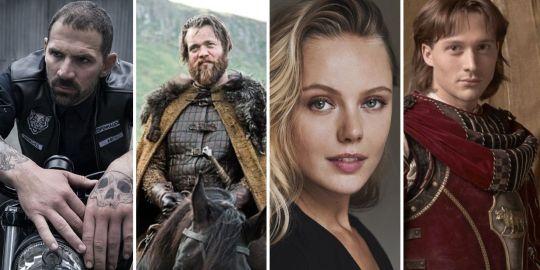
Netflix's Vikings: Valhalla cast includes actors and actresses who should be familiar to many TV viewers. The historical drama series takes place 100 years after the events of the popular History Channel show Vikings and chronicles the lives of several real-life Scandinavian warriors. Vikings: Valhalla doesn't have an official release date but will premiere sometime in 2021.
Vikings: Valhalla focuses on the end of the Viking era as Christianity takes over Scandinavia. When a religious Viking named Torsen survives a massacre led by King Æthelred the Unready, he forms a romance with a deeply anti-Christian woman named Freydís Eiríksdóttir. Vikings: Valhalla sets up a war between religious progressives and Scandinavians who cling to the past.
Related: Every New Show Releasing On Netflix In 2021
The Vikings: Valhalla main cast includes an ensemble lineup. Some performers already have loyal followings due to prominent roles in mainstream television, while others are mostly known for work in their native homelands. Just as Vikings helped launch the careers of so many actors and actresses, the Netflix follow-up will similarly do the same.
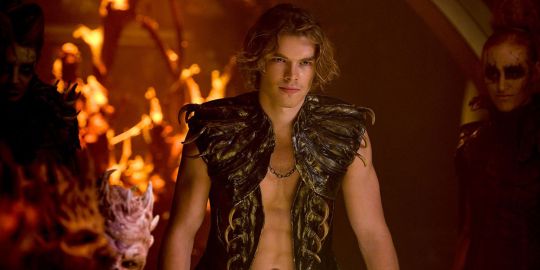
Sam Corlett stars as Leif Eriksson, a famous Icelander who arrived in North America several hundred years before Christopher Columbus. In Vikings: Valhalla, he's framed as an outsider character who values family and old pagan beliefs. Netflix has teased that Leif will introduce audiences to a Viking world "in the throes of violent change." Corlett portrays Caliban in Chilling Adventures of Sabrina. He also appeared as Young Luke in the 2020 film The Dry.
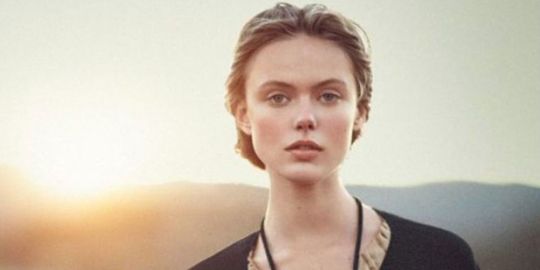
Frida Gustavsson co-headlines as Freydis Eriksdotter, Leif's pagan sister who values the ways of the Old Gods. After experiencing various tragedies, Frida forms a romance with a religious man and leads an uprising against Christians. Actress Katia Winter portrayed Freydis Eriksdotter in DC's Legends of Tomorrow. Gustavsson also starred as Vuxna Thea in the TV series Dröm and may be familiar to Netflix viewers as Ma from The Witcher season 1. She recently appeared as Clara in the 2020 series Partisan.

Leo Suter appears as Harald Sigurdsson, a nobleman who is one of the last Viking berserkers. Due to his charming ways, he's able to bridge the gap between Vikings and Christians, or at least that's his intent. Suter portrayed Young Stringer in Sanditon and Captain Bill Lauder in The Liberator. He also appeared as Drummond in Victoria and Daniel Beecham in Beecham House.
Related: Vikings Season 6 Ending Explained: Ragnar's Sons & Kattegat's New Ruler

Bradley Freegard co-stars as King Canute, the King of Denmark. He's a legendary Viking leader who was crowned in 1017. Freegard appeared as Mei Huws in the series Gwaith/Cartref and starred as Evan Howells in Keeping Faith.

Jóhannes Jóhannesson portrays Olaf Haroldson, Harald’s half-brother. He's a Christian who believes in the Old Testament and is quite large in stature. In real life, Olaf became the King of Norway. Jóhannesson is best known for portraying Lem Lemoncloak in Game of Thrones and Cumber the Ice King in Cursed. He also appeared as Bors in The Letter for the King.

Laura Berlin co-stars as Emma Of Normandy, an ambitious woman from the Norman court with Viking heritage. She's a savvy businesswoman with interest in politics, and also one of the wealthiest females in Europe. Berlin portrayed Julia Weigert in Einstein and Charlotte Lindemann in Breaking Even. She also appeared as Charlotte Montrose in the movies Ruby Red and Sapphire Blue.
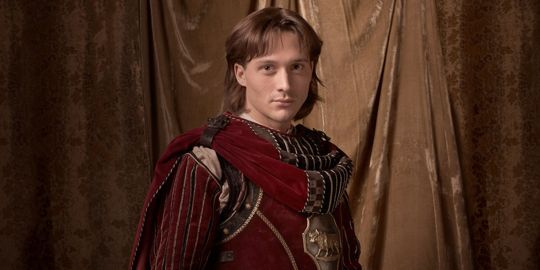
David Oakes appears as Earl Godwin, the chief counsellor to the King of England. Based on the man's real life story, he seems to be the Littlefinger of Vikings: Valhalla. Oakes portrayed Juan Borgia in The Borgias and Prince Ernest in Victoria. He's also known for his role as George Duke of Clarence in The White Queen.
Related: Vikings: What The Names of the Main Characters Really Mean

Caroline Henderson portrays Jarl Haakon, a warrior leader who rules Kattegat. The Pagan woman mentors Freydis and keeps an open mind when discussing religion. Henderson appeared as Snow White in the 2006 film Skymaster and Gloria Cole in the 2007 feature Always Yours.

Pollyanna McIntosh as Queen Ælfgifu: The Queen of Denmark who forms a relationship with Canute and hopes to affect the power dynamics across Northern Europe. Pollyana McIntosh portrayed Vera Chase in The Last Tycoon and Jadis in The Walking Dead.
Asbjørn Krogh Nissen as Jarl Kåre: A man who feels threatened by the old pagan ways. Asbjørn Krogh Nissen portrayed Ivan in Copenhagen and Odin in Valhalla - The Legend of Thor.
Julian Seager as Jarl Gorm: Julian Seager portrayed Florentin the Miller in Cursed.
Pääru Oja as Arne Gormsson: Pääru Oja portrayed Rupi in The Last Ones and Peeter Parik in O2.
James Ballanger as Hallbjorn: James Ballanger portrayed Guard Denny in the 2019 series The Capture.
Joakim Nätterqvist as Birkir: Joakim Nätterqvist starred as Arn Magnusson in Arn: The Knight Templar and appeared as Petter Torwalds in Maria Wern.
Related: Vikings: How Every Main Character's Death Compares To Real Life
Bosco Hogan as Aethelred the Unready: Bosco Hogan portrayed Bishop Fisher in The Tudors and Cardinal Piccolomini in The Borgias.
Jaakko Ohtonen as Johan: Jaakko Ohtonen appeared as Aaro Leppihalme in All the Sins and MakeX in HasBeen.
Mark Huberman as Earl of Sussex: Mark Huberman portrayed Lester Hashey in Band of Brothers and Greg in Finding Joy.
Gavin O'Connor as Earl of East Anglia: Gavin O'Connor played Macken in Taken Down and Murphy in The Alienist: Angel of Darkness.
Gavin Drea as Eadric Streona: Gavin Drea portrayed Sergeant Cooper in Valerian and the City of a Thousand Planets and Michael Collins in Resistance.
Gavan O'Connor-Duffy as Niall: Gavan O'Connor-Duffy portrayed King Frodo in Vikings and Saka in The Legion.
Yvonne Mai as Merin: Yvonne Mai appeared as Tara in Reflections and Megan in House of Shadows.
Bill Murphy as Ogda: Bill Murphy portrayed Ford in Jack Taylor and Bremner in Titanic: Blood and Steel.
Brian Robinson as YNGVI: Brian Robinson appeared as Irish in 2 Broke Girls and Pavle in Hit the Floor.
Next: All 27 2021 Netflix Movies Explained
Vikings Valhalla Cast Guide: Where You Know The Actors From from https://ift.tt/36lg74h
1 note
·
View note
Text
when: narrative
A brief overview of the history of Mecklenburg, from 1890 to 2006.
Means the person is a sole creation of me.
Means the person is non-fictional and important to the history of the family.

Heinrich Ludwig I, King of Mecklenburg, (born 26 January 1890) only child of Duke Johann Albrecht of Mecklenburg-Schwerin and Princess Elisabeth Sybille of Saxe-Weimar-Eisenach.
Princess Elisabeth Sybille died in 1908 when Heinrich Ludwig was eighteen years old. His mother was first cousin to Queen Wilhelmina of the Netherlands, making Wilhelmina his maternal first cousin once removed. Wilhelmina married Heinrich Ludwig’s paternal half-uncle, Duke Heinrich of Mecklenburg-Schwerin, making Queen Juliana of the Netherlands his half-paternal first cousin and his maternal second cousin. The events of WWII solidified the bonds between the House of Mecklenburg and the House of Orange.
Heinrich Ludwig’s father remarried in 1909 to Princess Elisabeth of Stolberg-Rossla, they would have no children and Heinrich Ludwig remained an only child.
Heinrich Ludwig’s father had been the regent for his nephew, Friedrich Franz IV, Grand Duke of Mecklenburg-Schwerin, from 1897 to 1901.
In 1915, aged twenty-five, Heinrich Ludwig, who was fourth in line to inherit the throne, overthrew his cousin, Friedrich Franz IV, along with the support of several family members due to Mecklenburg’s involvement in WWI. Grand Duke Friedrich Franz IV abdicated on 3 November 1915 and renounced the succession rights of his two sons. Heinrich Ludwig’s father also renounced his succession rights, this time in favour of his son, who then became the Grand Duke of Mecklenburg-Schwerin. Heinrich Ludwig recalled his troops and reinforced the border with Prussia. Mecklenburg effectively changed sides and begun supplying Entente troops (with little effect but the gesture was appreciated).
In early 1918, the Grand Duke of Mecklenburg-Strelitz committed suicide and Heinrich Ludwig took control of the grand duchy as the current heir was serving in the Russian Army and would later renounce his claim to the throne (the only surviving male-line was of morganatic descent and ineligible to inherit at the time).
When the German Empire and her allies lost the war in November 1918, Mecklenburg-Schwerin and Mecklenburg-Strelitz celebrated their victory.
Heinrich Ludwig had fallen for the young Princess Karola of Urach prior to the outbreak of WWI and intended to marry her. She was a member of a morganatic branch of the Royal House of Württemberg, but her mother had been a Duchess in Bavaria and Heinrich Ludwig deemed this royal connection to be strong enough to overcome the fact that her immediate family did not rule over a country.
Princess Karola was born Catholic and remained a Catholic for the rest of her life. Karola and Heinrich Ludwig married on 2 January 1919.
In the Treaty of Versailles of 1919, the Grand Duchies of Mecklenburg-Schwerin and Mecklenburg-Strelitz were joined to create the Kingdom of Mecklenburg. Heinrich Ludwig was now King and Karola his Queen.
The King and Queen now needed an heir, or several. The other men in the family had only daughters and women were not able to inherit.
A son and Crown Prince, Paul Friedrich, was born 10 September 1919, nine months after his parents wedding. A daughter, Marie Elisabeth, was born on 1 November 1921. There would be no further children.
Heinrich Ludwig and his family were popular. They were accommodating to the former Grand Ducal Family, allowing them to remain in their palaces for life, with the intention of inheriting the lands after their deaths. Instead of using Schweriner Schloss or Schloss Ludwigslust as his residence, Heinrich Ludwig had built a grand palace between Bad Doberan and Rostock, having moved the country’s capital to Rostock. He named the palace Euphemiasburg, after his ancestress Euphemia of Sweden.
Mecklenburg flourished in the years between WWI and WWII, they had not been sanctioned as the rest of the former German Empire had been and despite the troubles brought on by the Great Depression, became a minor power in Europe and an important member of central Europe, enjoying close ties with her neighbours and Baltic friends, especially Denmark and Poland.
However, there were groups of people, including governments of foreign countries who were uncomfortable with the existence of the Kingdom of Mecklenburg and her powerful King. Mecklenburg was a constitutional monarchy and had been since 1916, but Heinrich Ludwig I owned half the country as his personal property, had considerable executive powers and used them frequently to intercede with government affairs as an executive monarch and de facto upper house of government.
There were also calls for Mecklenburg to reunite with Germany. This notion became more popular after the rise of the Nazi Party, which attracted a considerable following in Mecklenburg from the early 1930s.
On 1 June 1938, the German Ambassador to Mecklenburg sent word to the King that Germany was mobilising its troops and that Mecklenburg would be occupied by morning on 2 June. The King had his children evacuate to Denmark where the former Grand Duke’s sister was Queen Consort. The former Grand Duke’s eldest daughter, Duchess Thyra of Mecklenburg-Schwerin, joined her second cousins in Denmark as she and Paul Friedrich were courting and did not want to be parted.
King Heinrich Ludwig I decided to remain in Mecklenburg to dissuade his cousin the former Grand Duke and his cousins’ sons from seeking the throne of Mecklenburg, or from being used as a puppet by Nazi Germany.
The Kingdom would be occupied by Nazi Germany for nearly seven years. The King and Queen were moved from Euphemiasburg to Schweriner Schloss and lived with the former Grand Duke and Duchess during the occupation. The King’s Government was able to function normally until 1940 when Mecklenburg was officially annexed by Nazi Germany. The country’s capital was moved back to Schwerin in 1940 where it remains to this day.
The former Grand Duke’s eldest son had joined the SS in 1931, and would be among those occupying Denmark from 1940 and disowned in 1943. The former Grand Duke’s second son and youngest daughter remained in Mecklenburg for the duration of the war.
When Great Britain declared war on Germany on 1 September 1939, Paul Friedrich, his sister Marie Elisabeth and Duchess Thyra fled to London as they feared that continental Europe was no longer safe. They remained in England for the rest of the war.
Paul Friedrich and Thyra were married at Windsor Castle on 2 October 1939. King George VI, Queen Elizabeth, Princess Elizabeth and Princess Margaret were among the guests.
Crown Princess Thyra would give birth to three daughters, also at Windsor Castle, Heinrike Franziska, on 4 June 1940, Elisabeth Mathilde, on 23 January 1942 and Marie Anastasia, on 12 October 1944.
King Heinrich Ludwig and Queen Karola learnt of their ever growing family through weekly BBC broadcasts given by their only son. King Heinrich Ludwig, faced with the possibility that he and his wife would not survive the German occupation, issued a royal decree changing the laws of succession to allow women to inherit the throne by male-preference primogeniture. In addition to this, he granted his children and grandchildren nominal dukedoms in the same way Sweden granted royal dukedoms.
From 1940 to 1945, the line of succession was:
Crown Prince Paul Friedrich, Duke of Rostock, son of King Heinrich Ludwig I
Princess Heinrike Franziska, Duchess of Ratzeburg, first daughter of the Crown Prince
Princess Elisabeth Mathilde, Duchess of Güstrow, second daughter of the Crown Prince
Princess Marie Anastasia, Duchess of Grevesmühlen, third daughter of the Crown Prince
Princess Marie Elisabeth, Duchess of Parchim, daughter of King Heinrich Ludwig I
The strong bond formed between the House of Mecklenburg and the House of Windsor during the War, and the Blitz especially, continues to this day.
After the defeat and surrender of the German forces in early May 1945, Crown Prince Paul Friedrich, Crown Princess Thyra and their children, and Princess Marie Elisabeth returned to Mecklenburg in late May, only days before Heinrike Franziska’s fifth birthday.
The King and Queen were overjoyed to see their children again and meet their grandchildren for the first time. The House of Mecklenburg had survived the war relatively unscathed.
Mecklenburg, however, did not. When the Red Army advanced through central Europe, Mecklenburg grew nervous, worried that they would be left behind by the Allies. However, some of their Baltic ports were deemed important enough to the UK, USA, and France to stand up to Russia and approximately 40% of Mecklenburg was lost to the Soviets in 1945 and the Kingdom would remain split in two until 1990.
The former Grand Duke, Friedrich Franz IV died on 17 November 1945. Heinrich Ludwig and Karola took possession of Schweriner Schloss as their pre-occupation home Euphemiasburg was now only miles from the Eastern German border. The former Grand Duchess took up residence at Schloss Ludwigslust, where she would remain until her death in 1963. She lived to see her son-in-law ascend the throne and for her eldest daughter to become Queen Consort.
Crown Prince Paul Friedrich and Crown Princess Thyra would have several more children.
Another daughter, Cecilie Auguste, Duchess of Ludwigslust, was born on 23 September 1947.
A son, Wilhelm Franz, Duke of Schwerin, was born on 17 July 1949, and was now second in line to inherit the throne after his father.
A fifth daughter, Alexandrine Luise, Duchess of Waren, was born on 18 March 1951.
A second son, Albrecht Gustav, Duke of Bad Doberan, was born on 7 October 1953.
In 1949, the King and Queen’s only daughter, Marie Elisabeth married Prince Gorm of Denmark, a grandson of Christian IX of Denmark, and they would have two children Harald, in 1953 and Feodora in 1955.
The first King of Mecklenburg died on 18 November 1954. His son ascended the throne as Paul Friedrich II of Mecklenburg with Thyra as his Queen Consort.
The new King and Queen would have one final child, Ingrid Sophie, Duchess of Teterow, born on 9 June 1955.
The new King and Queen were coronated at Schwerin Cathedral in 1956.
In 1956, the line of succession was:
Crown Prince Wilhelm Franz, Duke of Schwerin, first son of King Paul Friedrich II
Prince Albrecht Gustav, Duke of Bad Doberan, second son of King Paul Friedrich II
Princess Heinrike Franziska, Duchess of Ratzeburg, first daughter of King Paul Friedrich II
Princess Elisabeth Mathilde, Duchess of Güstrow, second daughter of King Paul Friedrich II
Princess Marie Anastasia, Duchess of Grevesmühlen, third daughter of King Paul Friedrich II
Princess Cecilie Auguste, Duchess of Ludwigslust, fourth daughter of King Paul Friedrich II
Princess Alexandrine Luise, Duchess of Waren, fifth daughter of King Paul Friedrich II
Princess Ingrid Sophie, Duchess of Teterow, sixth daughter of King Paul Friedrich II
Princess Marie Elisabeth, Duchess of Parchim, daughter of late King Heinrich Ludwig I
Prince Harald of Denmark, son of Princess Marie Elisabeth
Princess Feodora of Denmark, daughter of Princess Marie Elisabeth
The line of succession was well secured, and the royal family’s standing within Mecklenburg would be credited with maintaining the stability of the small Kingdom.
The King and Queen enjoyed enormous popularity and a very happy home life. According to the rules of succession, their children were only allowed to marry people from royal or noble families and from the early 1970s, their daughters began marrying foreign born princes and having children of their own.
Queen Karola outlived her husband by several years and was able to see several of her great-grandchildren born before she died in 1980, aged 83.
Unknown to the family at the time, but 1980 was the beginning of several years of loss and difficulty for the family.
Queen Thyra died suddenly on 27 September 1981 following a severe heart attack. The country, still reeling from the death of their beloved Karola, was plunged into mourning once more. King Paul Friedrich II was beside himself with grief and the trouble concerning his youngest son wasn’t doing his health any favours.
In 1981, the Crown Prince, now 32 years old, was still unmarried and his younger brother, Albrecht Gustav, had set his sights on Veronica Doncaster, an American born commoner with Mecklenburgish ancestry. The King disapproved and refused to declare such a marriage dynastic or relax the rules regarding the line of succession. If Albrecht Gustav and Veronica were to marry, the Prince would lose his place in the line of succession for himself and his descendants, and any children would not be able to inherit the many titles used by the Royal House of Mecklenburg.
King Paul Friedrich II of Mecklenburg died 12 January 1982, outliving his wife by only a few months.
His eldest son ascended the throne as King Wilhelm Franz I of Mecklenburg. Albrecht Gustav was now his brother’s heir presumptive.
Wilhelm Franz did not have any problem with members of his family marrying commoners and changed the rules of succession and the house rules to allow unequal marriages. Albrecht Gustav and Veronica were married at Schwerin Cathedral on 29 August 1982. Veronica became a Princess of Mecklenburg and Duchess of Bad Doberan. The public, who had been supportive of their prince marrying a commoner, were thrilled and hundreds of thousands of people lined the streets of Schwerin to celebrate the wedding.
Albrecht Gustav and Veronica became parents on 27 May 1983, when a son, Paul Ludwig was born. They would have another child, Marie Leopoldine, born 3 February 1985, before moving to Canada in August 1985 to serve as Mecklenburg’s Ambassador to Canada. A further two children would be born while living in Canada, Christian Franz, born 7 March 1987 and Marie Josefine, born 27 January 1989.
In 1981, at the wedding of his cousin Prince Harald of Denmark to Duchess Helene of Oldenburg, King Wilhelm Franz I met the bride’s cousin, Princess Eleonora of Leiningen. Eleonora, born 12 May 1961, was almost thirteen years younger than the King, but they began a relationship in late 1981 and became engaged in 1984. When the couple were married in October 1985, the small Kingdom hosted a celebration like none they had seen in decades.
The new Queen settled into her role, supporting her husband and charitable causes in the years leading up to the collapse of the Soviet Union.
The King and Queen welcomed their first child, Karolina Augusta, Duchess of Elde, on 15 September 1988. From the young princess’s birth there was rumblings of changing the laws of succession to allow the eldest child to inherit regardless of gender.
On 15 September 1989, Karolina Augusta’s first birthday, the King granted his daughter the title Duchess of Rostock (a title previously held by her grandfather, King Paul Friedrich II) and announced his intention to change the laws of succession from 1 January 1990 among his descendants to absolute primogeniture and thus his daughter would become Crown Princess and the heiress apparent.
So, on 1 January 1990, King Wilhelm Franz I issued a royal decree changing the laws of succession and his daughter became the Crown Princess of Mecklenburg and the first heiress apparent in the country’s almost 900 year history.
Following the fall of the Soviet Union, the former lands of Mecklenburg were reunited and a referendum held on 14 October 1990 led to the incorporation of the lands of Vorpommern, almost doubling the size of the Kingdom of Mecklenburg. On 15 October, King Wilhelm Franz I announced that to honour Vorpommern he had changed his eldest daughter’s surname from von und zu Mecklenburg to von und zu Mecklenburg-Vorpommern. Karolina Augusta was now the head and founder of the House of Mecklenburg-Vorpommern, designated as a branch of the House of Mecklenburg.
From late 1990, the King and Queen started the long and arduous task of rebuilding their nation and welcoming their new subjects into a thoroughly western nation after decades of Soviet rule.
During an annual ski holiday to Switzerland, the King died following a skiing accident on 20 January 1992. Wilhelm Franz was only forty-two years old and had reigned for just over ten years.
His only child ascended the throne as Queen Karolina Augusta I of Mecklenburg. She was three and a half years old.
Queen Eleonora, who was seven months pregnant, was declared regent on 21 January 1992 by the Council of the Royal House and Family of Mecklenburg. The late King’s younger brother, Albrecht Gustav, who had been serving as the Mecklenburgish Ambassador to Canada, attempted to have himself declared regent, but was unsuccessful. Albrecht Gustav became resentful and refused to return to Mecklenburg once his term as Ambassador to Canada finished in 1993.
Queen Eleonora, now aged thirty-one, gave birth to a son, Klaus Wilhelm, Duke of Havel, on 12 March 1992.
The regency would last over fourteen years, until Karolina Augusta turned eighteen on 15 September 2006.
The rules regarding the line of succession where changed further in late 2006, to overturn the rule only allowing Protestants. This allowed the Catholic children of Princess Feodora into the line of succession.
The line of succession was now:
Prince Klaus Wilhelm, Duke of Havel
Prince Albrecht Gustav, Duke of Bad Doberan
Prince Paul Ludwig of Mecklenburg
Prince Christian Franz of Mecklenburg
Princess Marie Leopoldine of Mecklenburg
Princess Marie Josefine of Mecklenburg
Princess Heinrike Franziska, Duchess of Ratzeburg
Princess Elisabeth Mathilde, Duchess of Güstrow
Prince Ludwig of Hohenlohe-Langenburg
Princess Juliana of Hohenlohe-Langenburg
Princess Lucinda of Hohenlohe-Langenburg
Prince Konstantin of Hohenlohe-Langenburg
Princess Marie Anastasia, Duchess of Grevesmühlen
Prince Karl Viktor of Hesse-Kassel
Prince Otto of Hesse-Kassel
Prince Ernst Albert of Hesse-Kassel
Prince Nikolaus Emmanuel of Hesse-Kassel
Princess Cecilie Auguste, Duchess of Ludwigslust
Prince Friedrich Magnus of Schwarzburg
Princess Anne Therese of Schwarzburg
Princess Alexandrine Luise, Duchess of Waren
Princess Ingeborg of Schleswig-Holstein-Sonderburg-Glücksburg
Princess Sigrid of Schleswig-Holstein-Sonderburg-Glücksburg
Princess Ingrid Sophie, Duchess of Teterow
Princess Marie Elisabeth, Duchess of Parchim
Prince Harald of Denmark
Prince Oskar of Denmark
Prince Axel of Denmark
Princess Louisa of Denmark
Princess Feodora of Liechtenstein
Prince Adam Karl of Liechtenstein
Prince Peter Gregor of Liechtenstein
Princess Bernadette Sophia of Liechtenstein
Princess Johanna Eleonore of Liechtenstein
6 notes
·
View notes
Text
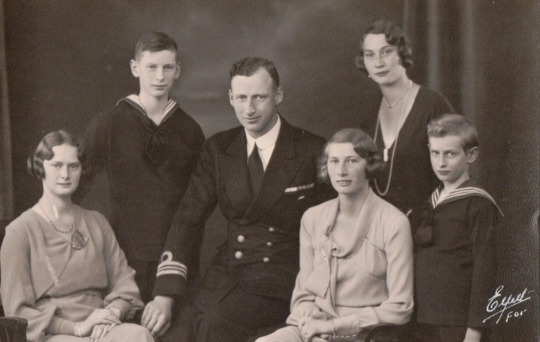
Hereditary Prince Knud of Denmark and his fiancée Princess Caroline-Mathilde with her siblings, Princess Alexandrine-Louise, Prince Gorm, Princess Feodora and Prince Oluf in 1933.
Prince Knud and Princess Caroline-Mathilde were first cousins, their fathers were brothers.
#hereditary prince knud of denmark#prince knud of denmark#princess caroline-mathilde of denmark#princess feodora of denmark#princess alexandrine-louise of denmark#prince gorm of denmark#prince oluf of denmark#danish royal#danish royalty#danish royal family#royal engagement#1933#decade: 1930s#1930s
20 notes
·
View notes
Text

Children of Prince Harald of Denmark (1876-1949) and Princess Helena Adelaide of Schleswig-Holstein (1888-1962). Mids 1920s.
From left to right: Prince Gorm (1919-1991) Prince Oluf (1923-1990), Princess Caroline- Mathilde (1912-1995), Princess Alexandrine-Louise (1914-1962) and Princess Feodora (1910-1975).
#princess feodora of Denmark#princess Caroline-Mathilde of Denmark#princess Alexandrine-Louise of Denmark#prince gorm of Denmark#prince oluf of Denmark#danish Royal#danish Royalty#danish royal family#Denmark#Schleswig-holstein-sonderburg-glücksburg#schleswig-holstein#danish#1920s#mids 1920s
24 notes
·
View notes
Text
who: british line of succession
Succession to the British throne is determined by descent, gender, legitimacy, and religion. Under common law, the crown is inherited by an individual's children and by a childless individual's nearest collateral line. The Bill of Rights 1689 and the Act of Settlement 1701, both of them as amended in March 2015, restrict the succession to the legitimate Protestant descendants of Sophia of Hanover that are in "communion with the Church of England” (while marrying to Roman Catholics no longer disqualifies). Protestant descendants of those excluded for being Catholics are eligible to succeed.
The United Kingdom is one of the 16 Commonwealth realms. Each of those countries has the same person as monarch and the same order of succession. In 2011, the prime ministers of the realms agreed unanimously to adopt a common approach to amending the rules on the succession to their respective Crowns so that absolute primogeniture would apply for persons born after the date of the agreement, instead of male-preference primogeniture, and the ban on marriages to Roman Catholics would be lifted. The ban on Catholics themselves was retained to ensure that the monarch would be in communion with the Church of England. After the necessary legislation had been enacted in accordance with each realm's constitution, the changes took effect on 26 March 2015.
(source)
Current line of succession (as at 2015 and limited to the descendants of Elizabeth II)
HM Queen Elizabeth II (b. 1926) …..(1) HRH Charles, Prince of Wales (b. 1948) ……….(2) HRH Prince William, Duke of Cambridge (b. 1982) ……………(3) HRH Prince George of Cambridge (b. 2013) ……………(4) HRH Princess Charlotte of Cambridge (b. 2015) ……….(5) HRH Prince Henry of Wales (b. 1984) …..(6) HRH Prince Andrew, Duke of York (b. 1960) ……….(7) HRH Princess Beatrice of York (b. 1988) ……….(8) HRH Princess Eugenie of York (b. 1990) …..(9) HRH Prince Edward, Earl of Wessex (b. 1964) ……….(10) James, Viscount Severn (b. 2007) ……….(11) Lady Louise Windsor (b. 2003) …..(12) HRH Anne, Princess Royal (b. 1950) ……….(13) Peter Phillips (b. 1977) ……………(14) Savannah Phillips (b. 2010) ……………(15) Isla Phillips (b. 2012) ……….(16) Zara Tindall (b. 1981) ……………(17) Mia Tindall (b. 2014)
Note on members of the Royal House and Family of Mecklenburg:
The first King, Heinrich Ludwig I was a descendant of George II through his mother, and of George I through his father, with his mother having the superior claim. Heinrich Ludwig’s wife was also a descendant of George I but as a Roman Catholic, Karola was excluded from succession. Heinrich Ludwig lost his place in the line of succession following his marriage to a Roman Catholic. Heinrich Ludwig and Karola’s children were placed in the line of succession after their father as he had the superior claim.
The second King, Paul Friedrich II, married Duchess Thyra of Mecklenburg-Schwerin, a descendant of George III, with a more senior claim, therefore the children of Paul Friedrich and Thyra were placed in the line of succession after their mother.
The third King, Wilhelm Franz I, married Princess Eleonora of Leiningen, a descendant of Queen Victoria but as that descent is through the unapproved marriage of Princess Victoria Melita of Saxe-Coburg and Gotha to Grand Duke Kirill Vladimirovich of Russia, Eleonora cannot claim her place in the line of succession through that marriage. Instead, Eleonora is in the line of succession to the British throne as a descendant of Frederick, Prince of Wales. Wilhelm Franz has the more senior claim as descendant of George III and thus his children follow him in the line of succession.
The second son of Paul Friedrich II, Prince Albrecht Gustav, married Veronica Doncaster, who has no claim to the British throne and thus their children follow their father.
The eldest daughter of Paul Friedrich II, Princess Heinrike Franziska is unmarried and without issue.
The second daughter of Paul Friedrich II, Princess Elisabeth Mathilde, married Prince Rupprecht of Hohenlohe-Langenburg, a descendant of Queen Victoria and thus their children follow their father in the line of succession to the British throne. Princess Elisabeth Mathilde’s descendants have the most senior position of the Mecklenburgers in the British line of succession as they are descended from Queen Victoria’s second son, Alfred, Duke of Edinburgh and Saxe-Coburg and Gotha.
The third daughter of Paul Friedrich II, Princess Marie Anastasia, married Prince Heinrich of Hesse-Kassel, who had a more senior claim as a descendant of Queen Victoria through her eldest daughter, thereby the children of Marie Anastasia and Heinrich follow their father in the line of succession.
The fourth daughter of Paul Friedrich II, Princess Cecilie Auguste, married Hereditary Prince Michael of Schwarzburg, a descendant of George I of the United Kingdom. As Cecilie Auguste has a more senior claim as a descendant of George III, their children follow their mother in the line of succession.
Princess Marie Elisabeth, daughter of Heinrich Ludwig I, married Prince Gorm of Denmark, who also descended from George II but as Marie Elisabeth had the more senior claim, their children followed after her instead of him. Their grandchildren by their daughter, Feodora, are excluded from the British line of succession as they are Roman Catholic.
4 notes
·
View notes